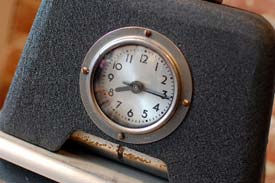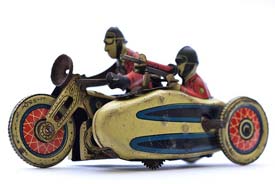
We’ve all been there. Stuck in a job we hate. Listening to the minutes tick by like days while we stare out the window. Wishing we were anywhere but here. A bad work experience can be demoralizing and dehumanizing. It can turn the most ambitious of us into a withered trunk of a person.
So how can we build company culture and start creating a fun workplace for our employees? I’ll give you a hint, it takes more than a foosball table. A creative company culture does not happen on it’s own, it requires participation and contributions from everyone. All it takes is one unhappy person to bring the rest of the team down. Here are some lessons we’ve learned over the years on how to foster a creative and productive company culture.
Put your team first, not the client
Consider the people working for you as a non-renewable resource. The combination of their personality, skills, and knowledge of the agency’s workflow makes them difficult to replace. When you put the client’s needs before the needs of the web designers, developers, and others on your team, you are telling them that they are less important than the client. I’ve been there, it sucks.
It’s a problem that is easy to solve, but not fun. The project manager needs to stand up to the client and say “no.” More than once. Clients are much easier to replace than talented team members. And trust me, your team cares a lot more about your small business than your client.
Allow for flexible hours
 In the states we are typically close-minded about what constitutes a workday. It’s a bastion of the industrial revolution. We work from 8am to 5pm with a one hour lunch, no exceptions. This is no way to run a web design and development shop or any creative agency. Creativity isn’t on the clock. Most web developers I’ve met hate getting up early.
In the states we are typically close-minded about what constitutes a workday. It’s a bastion of the industrial revolution. We work from 8am to 5pm with a one hour lunch, no exceptions. This is no way to run a web design and development shop or any creative agency. Creativity isn’t on the clock. Most web developers I’ve met hate getting up early.
Give your team the option to work off-peak. The only restriction would be that they appear on the grid frequently enough to collaborate with other members on the team, and track their time so everyone knows how much the others are contributing. Let the process define the work flow, the when and how of the hours worked. Creativity, whether applied to design or development, will come to us when we least expect it. A change of scenery is often times the best way to bring it on.
Focus on getting work done, not when it’s getting done.
Empower the team to make decisions
The project manager is the primary person who interfaces between the client and the team, but she doesn’t have to make all the decisions, nor should she. There are so many decisions to be made, both big and small, while managing any web design, development or creative project. Let the team make some of those decisions. Not only will it empower the team, it will free up the project manager to focus on more important aspects of the project. Good project managers know better than to micromanage their team. Great project managers let their team participate in the macromanagement as well.
Encourage sidecar projects
 There are some people who just want to punch a clock each day until they’ve collected enough paychecks to retire. Most web designers, developers and creatives don’t fit that profile. We are going to brainstorm, design, build, develop, and create, regardless of whether we’re doing it for money or not. This is a good thing.
There are some people who just want to punch a clock each day until they’ve collected enough paychecks to retire. Most web designers, developers and creatives don’t fit that profile. We are going to brainstorm, design, build, develop, and create, regardless of whether we’re doing it for money or not. This is a good thing.
Encourage your team to spend part of their work day on sidecar projects, fun and creative projects with no guidelines or restrictions. You will be amazed at what people can create when unleashed to roam wild. And that creativity is inevitably going to spill over into billable projects. We’ve been developing sidecar projects since day one at Pelago, and several of our ideas have been designed, developed, and open sourced.
Drop the dress code
Dress codes are just silly. Dress decent when interfacing with clients (I keep a button-up shirt in my drawer for client meetings). Consider every other working hour a casual dress time.
Get together after hours, or during hours
Work should not be all about work. You spend a majority of your waking moments with these people. Get out and do something fun. Take the morning off and go get breakfast or cut out early to catch happy hour at the local watering hole. Spending time together away from work enables the team to forge social bonds that will benefit the team dynamic. And it’s a great morale booster when the company picks up the tab for a meal and some drinks.
Dish out the swag
Swag is cheap, and new sites like swaglove.com let you pay as you go. Print up some shirts and hats with some fun artwork and hand them out to everyone. Give them something they can be proud to wear, don’t just turn them into walking billboards. A little swag love can go a long way in building team loyalty.
It’s the small things that count
 The people working their asses off to churn out good work don’t want to be outfitted with Apple products and paraded down main street. They just want to be appreciated. Keep the office fridge stocked with drinks, snacks and easy-to-make meals. Install a nice counter top coffee maker. Subscribe to DirectTV for the conference room television, and throw a Slingbox on it so people can use it at home. Give them a small budget to decorate their workspace. Buy everyone a cool sketchbook for capturing those creative onslaughts. Office amenities should be seen as a communal resource to be replenished as often as needed.
The people working their asses off to churn out good work don’t want to be outfitted with Apple products and paraded down main street. They just want to be appreciated. Keep the office fridge stocked with drinks, snacks and easy-to-make meals. Install a nice counter top coffee maker. Subscribe to DirectTV for the conference room television, and throw a Slingbox on it so people can use it at home. Give them a small budget to decorate their workspace. Buy everyone a cool sketchbook for capturing those creative onslaughts. Office amenities should be seen as a communal resource to be replenished as often as needed.
It’s the big things that count, too…
 Don’t limit yourself to the small things. Find out what drives people and do something nice for them on a bigger scale. This can be anything from cash bonuses to baseball tickets. Send the team to SXSW, OSCON, or any conference they might enjoy. There is a reason conferences are referred to as paid vacations; it’s because they are fun. A good team will be naturally driven to produce great creative work. Reward them for their drive by giving back to them in a meaningful way.
Don’t limit yourself to the small things. Find out what drives people and do something nice for them on a bigger scale. This can be anything from cash bonuses to baseball tickets. Send the team to SXSW, OSCON, or any conference they might enjoy. There is a reason conferences are referred to as paid vacations; it’s because they are fun. A good team will be naturally driven to produce great creative work. Reward them for their drive by giving back to them in a meaningful way.
Bump it
Add a few speakers to an idling computer in the office or purchase a compact stereo system and let people take turns being the DJ. A little ambient music in the mix helps get a creative mind going, gets people in a good mood, and exposes the team to one another’s listening tastes. I’ve discovered several great bands from co-workers who spun some choice tunes while being the designated DJ.
Laugh together
Laughter is good therapy. Take some time to make others laugh. Pass around some funny videos. Watch a comedy at lunch. Play a devious prank on an unsuspecting co-worker. Just make sure the source of the laughter is uplifting and not singling anyone out and you’ll add plenty of camaraderie to your collaboration.
Miscellaneous Debris
This is just a list of things we’ve done successfully to keep our design, development and creative team productive. There are plenty of things I’m forgetting or have never thought of doing. Please, share your ideas of what makes a good team greater and more fun to work alongside.
- Photo credits:
- I hate my job,
- Punch clock,
- SFA pennytoy, France 1950,
- Coffee cup,
- 737 aflight.



